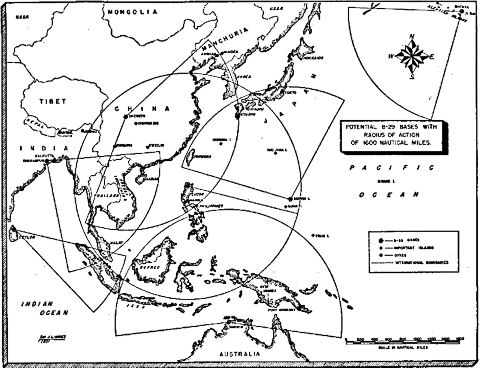
Gunnery Sergeant Robert Howard McCard (November 25, 1918 – June 16, 1944), US Marine Corps, received the Medal of Honor (posthumously) for his actions during the Battle of Saipan in the Pacific Theater of Operations during World War II.
While news of the Allied invasion of Normandy was dominating U.S. headlines in June 1944, U.S. forces in the Pacific were preparing for their own amphibious assault of massive strategic importance. Although General MacArthur and Admiral Nimitz had already secured victories in the Solomon, Gilbert and Marshall Islands as well as Papua New Guinea, American air power could not effectively reach the Japanese home islands from these newly acquired bases. The next step in the Island Hopping Campaign was to occupy the strategic Marianas Islands (Guam, Rota, Tinian and Saipan) and Taiwan. “Operation Forager” was the U.S. plan to take the Marianas, with “Operation Tearaway” designated as the first objective: the capture of Saipan (the Japanese administrative center of the Marianas). From there, the U.S. could take the remaining Marianas Islands and establish bases for the Army Air Corps’ newest long range bomber, the B-29 Superfortress. With an operational range of 1600 miles, the B-29 could attack Japan in advance of U.S. invasion forces.

On 5 June 1944, the day before “Operation Overlord” began in France, the invasion force departed Pearl Harbor for the transit to Saipan. The V Amphibious Corps landing forces, under Lt Gen Holland M. “Howlin’ Mad” Smith (USMC), would consist of the 2nd Marine Division, the 4th Marine Division, and the U.S. Army’s 27th Infantry Division. The U.S. Navy’s Task Force 58, commanded by Admiral Marc Mitscher, was assigned escort duty for the amphibious force and would reduce Saipan’s aerial defenses by launching carrier based air attacks beginning June 11th. Over the next few days, Naval air forces destroyed the bulk of the Japanese aircraft in the Marianas, and they bombed airfields and key infrastructure to enable the main assault. By June 14th, American battleships began hammering the Japanese emplacements on the shores of Saipan. Once the invasion began, TF 58 moved seaward to provide protection from Japanese naval forces approaching from the southwest. It would fend off the last large attack by Japanese carrier forces between 19-20 June in the Battle of the Philippine Sea (aka The Marianas Turkey Shoot); the Japanese would lose three aircraft carriers, over 433 carrier aircraft, and nearly 200 land-based aircraft. The U.S. would only lose 123 aircraft and one battleship.

On 15 June 1944, D-Day, the 2nd and 4th Marine Divisions began their landings on the southwestern shore of Saipan. Measuring only 12 miles by 5.6 miles (44.55 square miles), Saipan is surrounded by coral reefs and dominated by a mountain chain through the center of the island. The going was rough. The Japanese had a force of close to 32,000 to defend the island and its 25,000 or so inhabitants. The U.S. sent a force of nearly 71,000. U.S. Marines met stiff resistance immediately, and began a slow advance toward its main objectives: linking the two landing forces, capturing Aslito Airfield, and securing the main population center at Garapan.

During the slow advance on June 16th, the Marines of Company A, 4th Tank Battalion, 4th Marine Division came under tremendous Japanese artillery fire and infantry attack. The heavy fire from Japanese 77mm guns severely damaged the tank of GySgt Robert H. McCard, acting platoon sergeant for Company A. Cut off from their platoon, GySgt McCard and his men did the only thing they could: throw everything they had at the enemy. When that proved insufficient, McCard ordered his men to evacuate the tank and escape to friendly lines. McCard covered their movement by lobbing grenades at the enemy, until he had none left. He then removed a machine gun from the tank and began firing at the enemy until he was overrun and killed, but not before he killed 16 enemy soldiers and enabled his men to escape. For his gallantry and sacrifice, GySgt McCard was posthumously awarded the Medal of Honor, which was presented to his widow at Centralia, IL on 10 April 1945.
The Battle of Saipan continued through June and ended on 9 July. Along with GySgt McCard, four other men would receive the Medal of Honor (all posthumously) and one other would receive the Navy Cross. The U.S. victory came at the price of 3,426 killed and/or missing and 10,364 wounded. Japanese casualties were staggering: approximately 24,000 killed, 5,000 committed suicide, and only 921 were taken prisoner. Around 22,000 civilians died, the majority of which committed suicide on orders from the Emperor.
GySgt McCard was buried with his Marine brothers on Saipan. His remains were moved from the 4th Marine Division cemetery on Saipan and laid to rest in 1948 at the National Memorial Cemetery of the Pacific (The Punch Bowl) in Hawaii, Section B, Site 1024. His sacrifice and that of his fellow Marines and Soldiers on Saipan was a terrible price to pay, but ultimately enabled peace and prevented the potential death of tens or even hundreds of thousands more. Semper Fidelis.
http://www.pacificmaritimeheritagetrail.com/history-of-the-battle/
http://www.ibiblio.org/hyperwar/AAF/V/AAF-V-1.html
http://www.mcu.usmc.mil/historydivision/Pages/Who's%20Who/M-O/mccard_rh.aspx
http://www.jcs-group.com/military/war1941naval/1944force.html
https://en.wikipedia.org/wiki/Robert_H._McCard
https://en.wikipedia.org/wiki/Battle_of_Saipan
